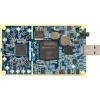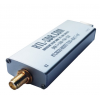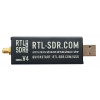Shopping Cart
0 item(s) - R0.00- 3D Printing and Plastic peripherals (8)
- 433Mhz and Lora (9)
-
Amateur Radio (651)
- - Antenna Analyzer (12)
- - APRS (12)
- - ATU (5)
- - CW (1)
- - Digital Modes (9)
- - DMR (4)
- - Echolink (10)
- - Enclosure (13)
- - Eshail-2 (QO-100) (67)
- - GPS (8)
- - iGate (1)
- - Microcontrollers (43)
- - Microphone (1)
- - Power Supply (7)
- - Programming Cable (6)
- - QRP (9)
- - Radio interface (21)
- - Receiver (9)
- - Repeater (4)
- - RF Amplifiers (20)
- - RF Kits (19)
- - RF modules (116)
- - Rotator (1)
- - SDR (75)
- - Spectrum Analyzer (4)
- - SWR (9)
- - Transceiver (59)
- - WSPR (5)
- Antennas and Acc (320)
- Audio and Video (28)
- Bargain Box (1)
- Battery (3)
- Bluetooth (11)
- Cables (37)
- Computer Peripherals (104)
- Connectors (90)
- Data acquisition (1)
- Display (2)
- Electromechanical (25)
- Enclosure (12)
- GPS (6)
- Hardware (3)
- Home Automation (128)
- Inverter (9)
- Liquid (7)
- Lora (8)
- Microcontrollers (119)
- Modbus (3)
- MQTT (14)
- Network Radio (3)
- Networking (8)
- Power (133)
- Power supply (49)
- Radio Interface (17)
- RF Modules (142)
- ROIP (2)
- Satellite (93)
- Security (13)
- Sensor (17)
- Solar (14)
- Test and Measurements (66)
- Tools and Equipment (8)
- VOIP (10)
- Weather (1)
LimeNet Micro SDR with build in Raspberry Pi (10 MHz - 3.5 GHz)
Ex Tax: R7,812.00
Add to Compare
LimeNet-Micro SDR
LimeNET Micro makes deploying wireless networks more accessible than ever before, by extending the LimeNET line of integrated hardware solutions via an ultra-low cost platform that is capable of supporting narrowband systems, such as GSM and IoT wireless standards, in a stand-alone configuration.
As with existing integrated LimeNET platforms, the new LimeNET Micro is built on the very same revolutionary field-programmable RF (FPRF) technology and features the LMS7002M transceiver at its heart. However, this highly cost-optimised, single board solution also integrates GPS for high-accuracy timing, active Power-over-Ethernet (PoE), and embedded compute for fully standalone operation.
In utilising the Raspberry Pi Compute Module 3+, LimeNET Micro builds on previous platforms to further democratise wireless networks in much the same way that the Raspberry Pi has democratised embedded computing.
Given its incredibly low price point and highly integrated nature, there are endless application possibilities for LimeNET Micro, ranging from cellular networks and IoT, through spectrum monitoring, test and measurement, amateur radio, and radio astronomy.

Example Use Cases
- Inexpensive enterprise and personal networks
- Rural, autonomous, and resilient networks
- Universal IoT communications hubs
- Rapid deployment infrastructure for emergency response
- Remote radio solutions for amateur radio and radio astronomy
- Integration into application-specific RF appliances
- Radio spectrum survey
- Passive wireless geolocation
- PHY and security research
- RF-aware robotics

Features and Specifications
- RF transceiver: Lime Microsystems LMS7002M
- FPGA: Intel Altera MAX 10 (10M16SAU169C8G)
- 169-pin FBGA package
- 16K LEs
- 549 KB M9K memory
- 2,368 KB user flash memory
- 4 x fractional phase locked loops (PLLs)
- 45 x 18x18-bit multipliers
- 130 x general purpose input/output (GPIO)
- Single supply voltage
- Flash feature
- FPGA configuration via JTAG
- GNSS module: u-blox NEO-M8Q-0-10
- Supports BeiDou, Galileo, GLONASS, GPS / QZSS
- Able to concurrently receive up to three GNSS
- –167 dBm navigation sensitivity
- EEPROM memory: 2 x 128 KB for RF transceiver MCU firmware and data
- Flash memory: 1 x 4 MB flash memory for data
- General user inputs/outputs:
- 5 x dual color (red + green) LED
- 8 x FPGA GPIO pinheader (3.3 V)
- 4 x FPGA switches
- 1 x buzzer
- Connectivity:
- 2 x coaxial RF (SMA) connectors (each can be switched between high and low frequency bands)
- SMA connector for external clock source in
- SMA connector for clock source out
- SMA connector for GNSS antenna
- Raspberry Pi Touch Screen Display Connector (ribbon cable)
- Raspberry Pi Camera (ribbon cable)
- HDMI connector
- 2 x USB 2.0 ports
- 3.5 mm audio out (Raspberry Pi Compute Module)
- FPGA GPIO headers
- FPGA JTAG connector
- RJ45 connector for Ethernet and IEEE 802.3 active Power-over-Ethernet (PoE)
- DDR2 SODIMM connector - only usable for Raspberry Pi Compute Module 3 (or Lite)
- MicroSD slot for RPi Compute Module storage
- Barrel connector for 12 V DC power
- Micro-USB for USB boot of Compute Module
- Clock system:
- 30.72 MHz OCXO: Rakon U7475LF
- GPS disciplined for high frequency accuracy and stability
- External clock input via SMA connector
- Clock output via SMA connector
- Board dimensions: 125 mm x 65 mm

LimeNET Micro with Raspberry Pi Compute Module (bottom)

LimeNET Micro block diagram
Raspberry Pi Compute Module (CM3) Features
A Raspberry Pi Compute Module 3+ is included with every purchase of a LimeNET Micro (excluding early bird units). Raspberry Pi Compute Module 3+ Lite‘s will also work with LimeNET Micro, but would require use of the separate microSD slot.
- ARM Cortex-A53 Broadcom BCM2837 SoC - quad-core, 1.2 GHz
- 1 GB RAM
- 8 GB eMMC flash
Free & Open Source
As with the LimeSDR family, the LimeNET Micro is a free and open source project. We will be releasing code, firmware, schematics, layout, and associated project files via MyriadRF shortly.
Lime Suite
The LimeNET Micro uses the same host-side software as previous LimeNET integrated systems, called Lime Suite. Lime Suite is entirely open source and supports a variety of software-defined radios and APIs. You can learn more about Lime Suite at its GitHub repository and MyriadRF project page.
PantaHub
PantaHub lets you connect your devices and transform them into bare-metal infrastructure. Designed for deeply embedded and high-grade enterprise systems alike, the Pantavisor device agent and PantaHub are the perfect choice for the management of Linux devices and their firmware lifecycles.
The PantaHub base image will be pre-loaded onto all Compute Modules included in the Aluminum Kit pledge levels.
Comparison Table
| LimeSDR-USB | LimeSDR-Mini | LimeNET-Micro | |
|---|---|---|---|
| Frequency Range | 100 kHz - 3.8 GHz | 10 MHz - 3.5 GHz | 10 MHz - 3.5 GHz |
| RF Bandwidth | 61.44 MHz | 30.72 MHz | 10 MHz* |
| Sample Depth | 12 bit | 12 bit | 12 bit |
| Sample Rate | 61.44 MSPS | 30.72 MSPS | 10 MSPS* |
| TX Channels | 2 | 1 | 1 |
| RX Channels | 2 | 1 | 1 |
| Duplex | Full | Full | Full |
| Interface | USB 3.0 | USB 3.0 | N/A |
| Programmable Logic Gates | 40k | 16k | 16k |
| Chipset | LMS7002M | LMS7002M | LMS7002M |
| Processor | N/A | N/A | Raspberry Pi Compute Module 3+ (or CM3+ Lite) |
| Open Source | Full | Full | Full |
| Oscillator Precision | +/-1 ppm initial, +/-4 ppm stable | +/-1 ppm initial, +/-4 ppm stable | +/-5 ppb (100s measurement period) |
| Transmit Power | Max 10 dBm (depending on freq.) | Max 10 dBm (depending on freq.) | Max 10 dBm (depending on freq.) |
* - Maximum 10 MHz receive-only or 5 MHz full-duplex transmit plus receive. Actual RF bandwidth and sample rate will vary depending on any DSP or other processing also taking place on the Raspberry Pi Compute Module 3(L).
Support & Documentation
If you have a question about ordering, paying, or shipping, please refer to The Crowd Supply Guide.
If you have a technical question about the operation of the LimeNET Micro or any of its applications, please ask your question on the Myriad-RF forum.
Write a review
Your Name:Your Review: Note: HTML is not translated!
Rating: Bad Good
Enter the code in the box below:
Giga Technology © 2025

























